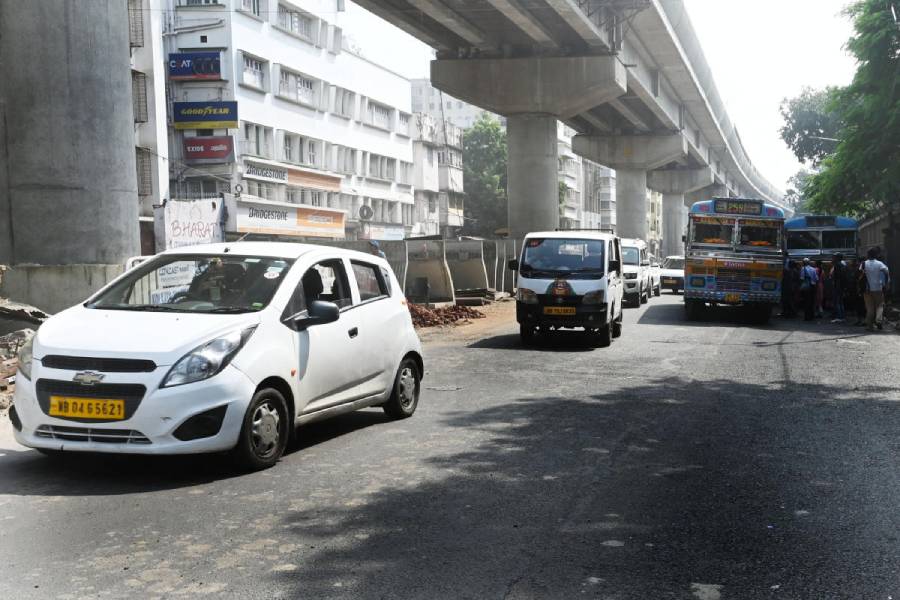The Calcutta Municipal Corporation (CMC) is repairing a stretch of Diamond Harbour Road using shredded plastic as a component of the bituminous mix, the top layer of a road.
The civic body used the same technology in repairing a road in the interiors of Behala a year ago and the surface did not wear off during the monsoon. Spurred by the performance of this road, civic engineers are now using the technology on another road, which sees more traffic and heavier vehicles.
An official said the road in Behala’s Bakshibagan was not tested by the movement of heavy vehicles. Only small cars use the road.
The stretch of Diamond Harbour Road that is being repaired — between the northern slope of the Majerhat bridge and Diamond Harbour Road-Remount Road crossing — is used by heavy goods vehicles, apart from buses and private cars.
“We want to see how this stretch of Diamond Harbour Road performs, post-repairs. Will the top bituminous layer break or survive the load of heavy traffic? The outcome will decide whether this technique of repair can be used on arterial roads,” said an engineer in the CMC’s roads department.
“A 310m stretch on the Kidderpore-bound flank of Diamond Harbour Road is being repaired. Repairs on 200 metres are over. The rest will be done in a few days,” said an official.
The bituminous mix forms the top layer of the road. “The mix contains 5.5 per cent bitumen. The rest is made of materials that include stones of various sizes,” said a CMC engineer.
“In this new technology, we are replacing 8 per cent of the 5.5 per cent bitumen with shredded plastic.”
Partha Pratim Biswas, a professor of construction engineering at Jadavpur University, said it is well known that a bituminous mix that contains “polymers” performs better on roads prone to waterlogging.
Besides, the presence of plastic in the mix will arrest or reduce the formation of cracks on the top layer.
“A bituminous mix with different types of polymers performs better than a mix without any polymers,” Biswas said.
“The bituminous mix with shredded plastic will have more tensile strength. The road is likely to be more durable as fewer cracks will form. Cracks lead to potholes.”
Plastic behaves like iron reinforcements in a concrete building and strengthens the bituminous mix.
The mix will also do better on roads prone to waterlogging. The role of bitumen is that of a binder, which holds together various components of the mixture, including stones. But bitumen loses its binding property when it comes in contact with water. The stones start disintegrating and this leads to the formation of potholes.
Plastic remains inert when it comes in contact with water and does not lose the binding property. It can thus arrest the disintegration of the stones in the mixture and reduce the formation of cracks and potholes.
CMC engineers said replacing some amount of bitumen with plastic reduces the cost of producing the bituminous mix. “We can save about Rs 20 or Rs 25 per tonne of the mixture,” said an engineer.
The CMC is now procuring shredded plastic — of a particular size and thickness — from private manufacturers in Bengal.
An engineer said there are plans to procure shredded plastic pieces from the CMC’s plastic recycling plant in Dhapa. The plant has a shredder.
“If we start using this technology on a larger scale, our plastic processing plant will be involved in the process. We will require tonnes of plastic,” said the engineer.
It will help recycle a part of the plastic waste generated in the city.
